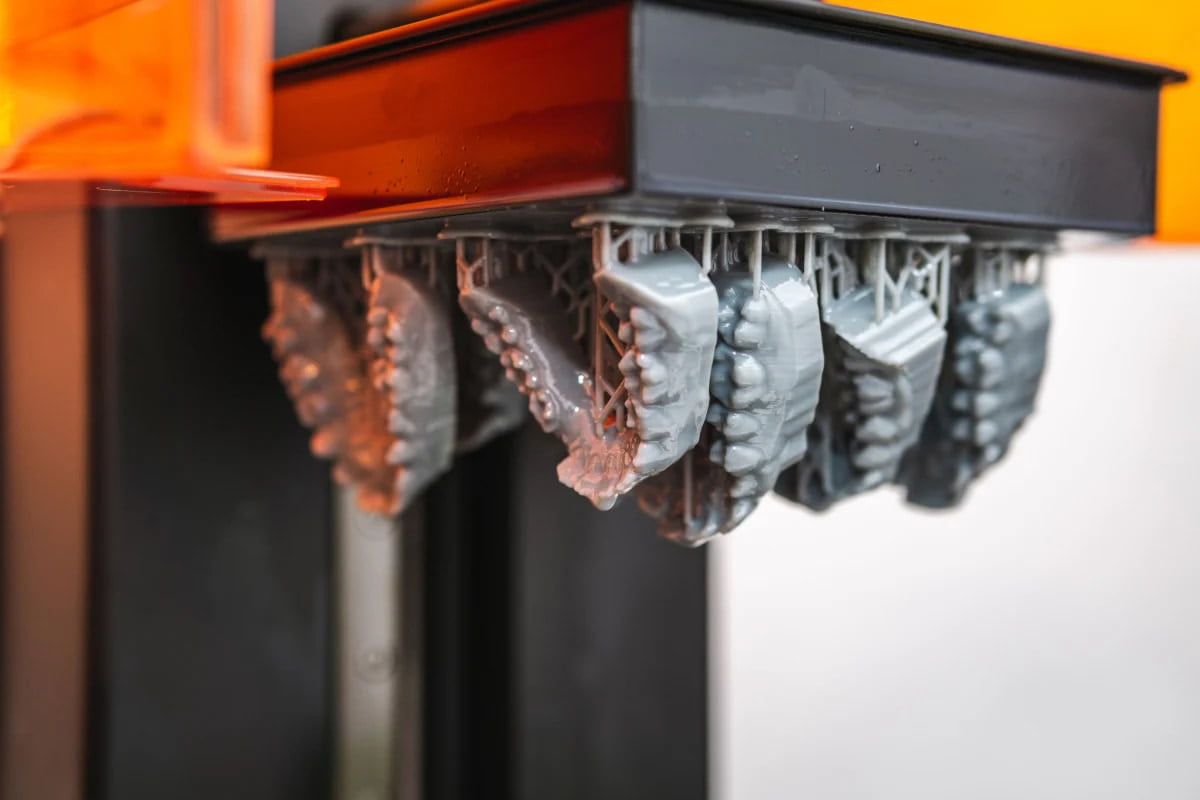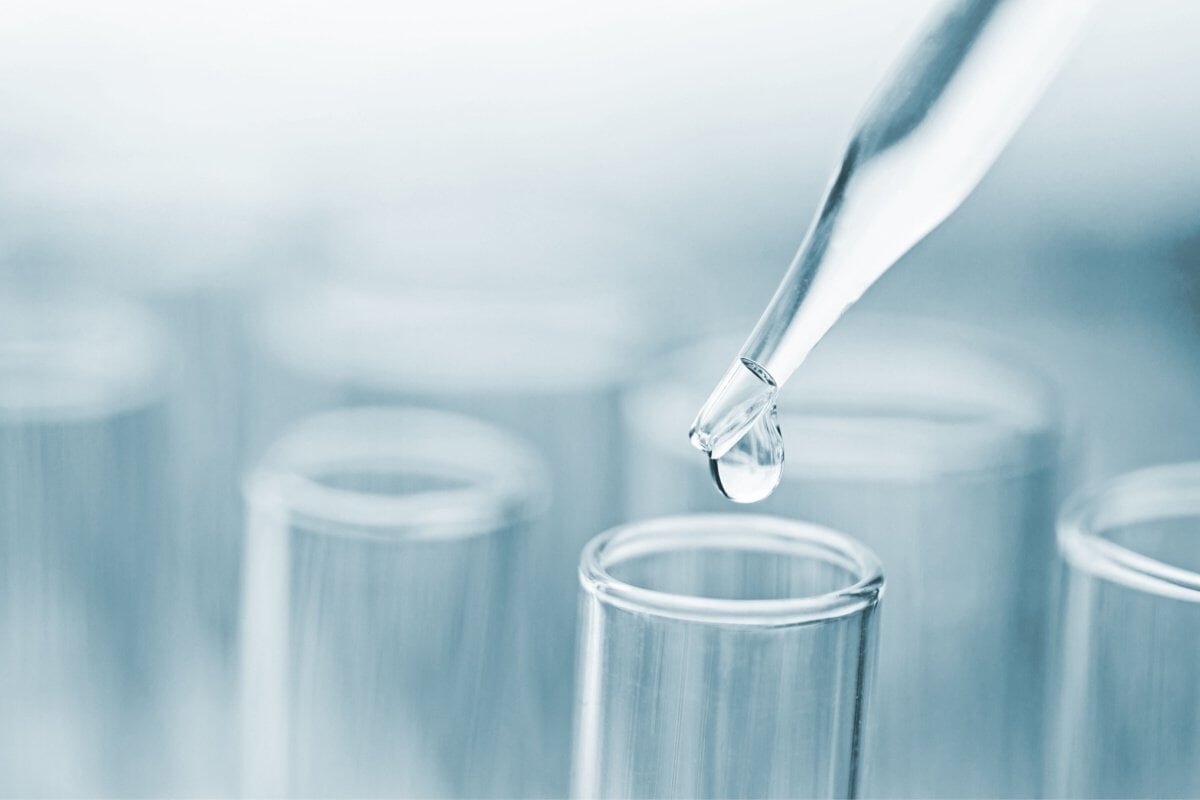
Over the past 10 years, there has been an explosion of interest in 3D printing technologies for dental and medical applications, thanks to the development of resins categorised as ‘biocompatible’. Because of the ability of 3D printing to rapidly prototype and manufacture custom parts, the production of tailor-made dental implants is already becoming routine, with other uses for this technology including medical devices and constructs for tissue engineering.
Toxic leachates from a ‘biocompatible’ resin
But a paper published last year in Chemosphere sounds a note of caution, by showing that 3D printing resins labelled as ‘biocompatible’ can still be toxic to cells. The work, carried out by a team led by Teresa Woodruff at Northwestern University, Chicago, USA, examined photocurable resins, Dental SG and Dental LT, which they used to 3D-print a female ‘reproductive tract on a chip’ previously developed by the team.
Because they were dealing with cells known to be sensitive to polymer leachates, they first screened the resins for toxicity using an in vitro mouse egg-cell maturation assay. However, they were surprised to find that Dental SG resulted in rapid degeneration of the egg cells – and although treating the resin with oxygen plasma prevented this degeneration, about half of the cultured cells still had abnormal chromosome morphology. The other resin, Dental LT, fared worse, with plasma treatment failing to prevent its ovo-toxic effects.

To uncover the reason behind this toxicity, the authors examined the leachate from Dental LT by LC–MS, and identified as a major component a mix of two light stabilizers, bis(1,2,2,6,6-pentamethyl-4-piperidyl)sebacate and methyl 1,2,2,6,6-pentamethyl-4-piperidyl sebacate (available commercially under the brand name Tinuvin® 292, and referred to as such in the article). Further work by Woodruff and colleagues confirmed that this stabilizer mix was indeed responsible for the ovo-toxicity – which they say “raises a biological red flag”.
A need for due diligence from the user?
What are we to make of these findings? From our perspective as a manufacturer, it shows that in the current rush to develop dental and medical applications of 3D printing, users perhaps need to exercise greater diligence when deciding on the components to use (especially where long-term contact with the body is involved). They also need to investigate the options for post-curing and ensure that any guidance is followed carefully, as we’ve described in a previous insight. But most importantly, they need to insist that manufacturers supply all the necessary information on the product’s constituents, and (if needed) double-check the safety of these constituents, their breakdown products, and even for the chemicals used in their production.
Regarding the two resins that are the subject of this research, Dental SG has now been discontinued, but Dental LT is still being sold, and the SDS clearly states that it contains the two light-stabilizing components referred to above. Strikingly, the manufacturer of the equivalent branded product, Tinuvin® 292, states that it “is not recommended to be used in contact with mucous membranes […] or for the manufacture of implants for the human body”, and that it is “suspected of damaging fertility”.
So in retrospect, the information is there that might have raised the ‘red flag’ for the authors earlier, had they examined the product’s components more critically. Not only that, but the Instructions for Use for Dental LT say that it is designed for use in “dental splints and retainers” and that it “should not be used for any other purpose”. So the authors were ill-advised to use this material for their study anyway, as pointed out in a commentary by another manufacturer in this field.
The role of standards
But thinking about the above-mentioned properties of the light-stabilizing mixture described, should it really be used in dental implants at all? This brings us back to a more fundamental question – if resins contain chemicals known to be toxic, how can they be claimed to be ‘biocompatible’, let alone marketed as suitable for long-term use in the body? That’s a difficult question to answer without a detailed knowledge of the testing and compliance protocols and their application in this instance. But it’s difficult to disagree with the authors’ sentiment that “certification of biocompatible materials should require rigorous reproductive toxicity testing in all cases”.
Of course, resolving such issues is the purpose of standards such as ISO 10993, and this particular standard is commonly cited by suppliers of resins for 3D printing. However, it’s not unusual to find product literature that doesn’t state which of the 20+ parts of the standard are complied with (see this paper for more on this point). Some manufacturers also make statements that could be easily misinterpreted by users not familiar with the intricacies of the standard – which, let’s face it, doesn’t make for easy reading.

Compliance with standards should be a major driver for improving understanding about the biocompatibility of 3D-printed products for medical and dental use.
Clearly then, responsible manufacturers should state which parts of the standard their product has been tested under, and the implications of compliance (or non-compliance) with these parts, to help their users to understand what that means for their application. At the same time, standards organisations and certification houses also need to ensure that they’re keeping pace with the rapid developments in the 3D printing field for medical and dental applications.
The meaning of biocompatibility
And as a final thought, perhaps we need to examine what we really understand by the term ‘biocompatibility’. ISO 10993-1 states: “For the purpose of the ISO 10993 family of standards, biocompatibility is defined as the ‘ability of a medical device or material to perform with an appropriate host response in a specific application’.”
To unpack that rather opaque definition, this means that the device has to do its job without causing harm beyond a level considered ‘appropriate’. This is quite a different thing from being free from any risk, which is what many might assume is meant by ‘biocompatibility’. Moreover, biocompatibility is context-dependent – in the case of 3D printed products, it’s not simply a function of the resins used, but depends on how those resins are integrated into the product, the conditions under which they are used, and much more.
Ensuring a correct understanding of biocompatibility
In conclusion, the rapid growth of interest in 3D-printed implants and devices for dental and medical applications requires everyone in the industry to work together to minimise confusion over biocompatibility. From our perspective, this means that:
- Manufacturers need to ensure that they’re helping their customers to understand the complexities of testing for biocompatibility, and so select the right resin for the application.
- Customers need to be aware that they should exercise due diligence over claims of ‘biocompatibility’, and not assume it means that a product is safe whatever the application.
- Standards organisations and certification houses need to ensure that they’re keeping up to date with the emerging applications.
- All of us need to take a little more care in how we use the term ‘biocompatibility’, and ensure that we’re clear about what we really mean.
Much of this comes down to openness in sharing information, and clarity in communicating that information to the relevant people. ‘Biocompatibility’ may only be a word, but the health and safety of the end-customers – and the reputation of 3D printing in this field – may come to depend on everyone using it in the right way.
If you’re having trouble selecting 3D-printing resins for dental or medical applications, then we’d be happy to offer guidance. Get in touch to talk about your project.